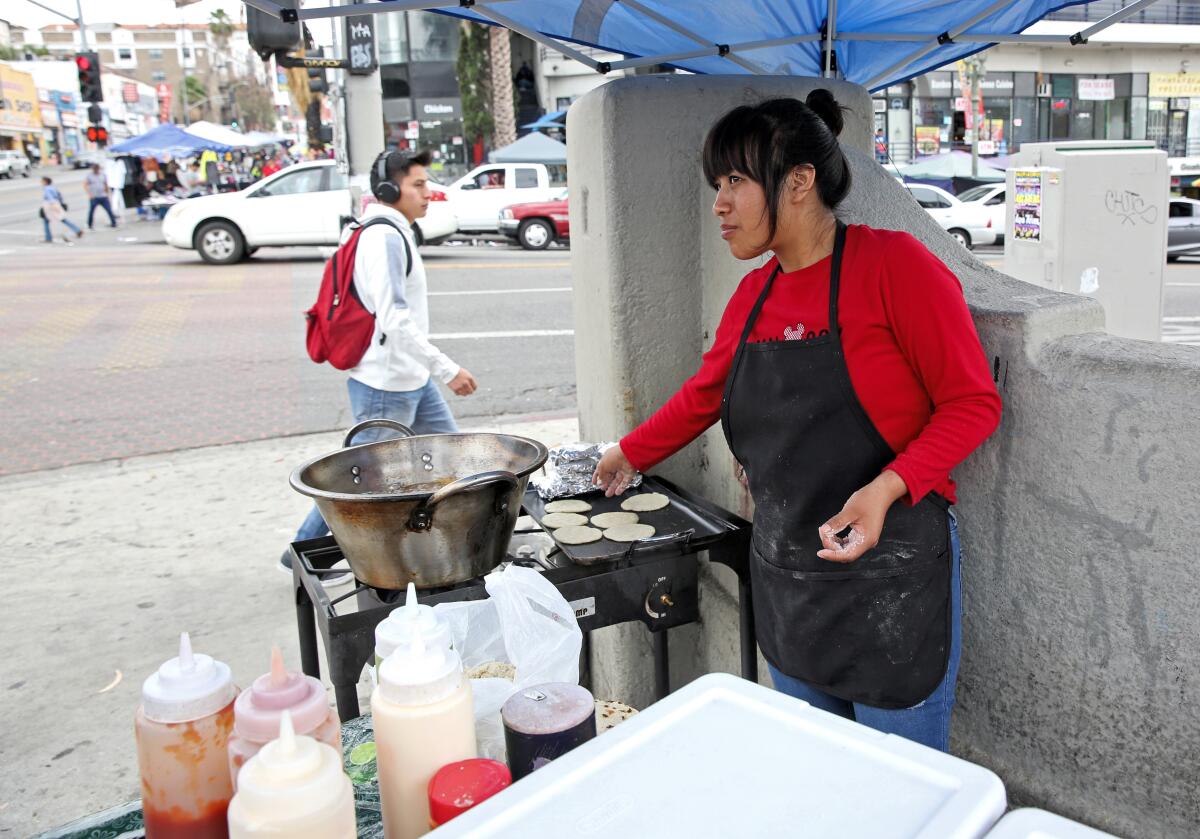Good morning. It’s Thursday, Aug. 1. Here’s what you need to know to start your day.
Unpacking the data on immigration and the economy
As the U.S. election cycle ramps up, immigration remains a key battlefront for state and national races.
Donald Trump’s message remains virtually unchanged since his now-infamous speech that launched his first presidential campaign in 2015. By his account, immigrants are taking jobs from U.S.-born citizens and “poisoning the blood of our country.” More recently, he claimed they’re taking “Black jobs,” a term he clarified this week as “anybody who has a job.”
He blames the recent surge in immigration on Vice President and Democratic presidential candidate Kamala Harris, who was tasked by President Biden with addressing some root causes of migration from Central American countries. That led to her much maligned “do not come” moment, plus ongoing scrutiny of her White House performance and immigration policies.
There’s no shortage of anecdotes, caveats and Hitler-esque rhetoric about the effect immigration is having on the U.S. But what do the data show?
Times reporter Don Lee sought to answer that question, examining recent federal and state data to understand the effects on the labor market and economy. His examination reveals a much more positive outlook than Trump and other conservatives are painting.

Roselia Guarchaj, originally from Guatemala, makes tortillas at her corner stand at McArthur Park.
(Raul Roa / Los Angeles Times)
“The surge of international migrants since 2021… has lifted the U.S. and California economies by filling otherwise vacant jobs, helping to keep job creation strong, growing businesses and pumping millions of tax dollars into state, local and federal coffers,” Don wrote this week, adding:
“Without immigration, California’s workforce would have fallen well short of its needs, especially since the high cost of living, soaring home prices and other factors have fueled a notable outflow of population from the state.”
Here are three key takeaways from Don’s findings.
California’s labor market relies considerably on immigrants
OK, that probably isn’t too surprising in a state where more than a quarter of residents are foreign-born. Immigrant workers fill the ranks of major state industries including agriculture, construction, healthcare and hospitality.
Based on a Times analysis of 2022 Census Bureau data, foreign-born Californians make up:
- One-third of all restaurant and warehouse workers
- About 40% of home healthcare and child day-care workers
- Nearly 50% of workers at trucking and lodging businesses
- 60% of workers in landscaping and janitorial services
Looking at employers’ data from the Bureau of Labor Statistics, Don noted that more than 70% of the new jobs added in the state between June 2022 and June 2024 were in two sectors: social assistance (including health services for the elderly and child care) and leisure and hospitality, (mostly hotels and restaurants).
That comes amid a notable loss of private-sector jobs in California, which has an overall unemployment rate of 5.2% — the highest in the nation.
Immigration is a net positive for the U.S. bottom line, feds say
Don noted the “short-term public costs” of increased immigration, such as education and health services.
“Many agree the current immigration system is flawed and chaotic,” he wrote. “But from a budgetary perspective, the additional federal spending on immigrants is projected to pale next to the increase in revenues from the millions more people working, paying taxes and buying goods and services, according to the Congressional Budget Office.”
Researchers also say more immigrants generating payroll taxes could ease the strain on the nation’s Social Security and Medicare systems.
Immigrants aren’t taking jobs from U.S.-born workers, research shows
Despite the political talking points, studies show immigration does not have a significant negative effect on wages and employment for native-born U.S. workers.
Don pointed to a study from the National Bureau of Economic Research in April, which found that immigrants’ participation in the labor market between 2000 and 2019 has benefited non-college-educated native-born workers in terms of wages and led to “no significant wage effect on college educated natives.”
“Even simulations for the most recent 2019-2022 period suggest small positive effects on wages of non-college natives and no significant crowding out effects on employment,” the study’s authors wrote.
Many of the jobs recent immigrants are taking are physically demanding and don’t pay enough to attract many native-born Americans. There is a growing labor movement advocating for better conditions and wages for many of those workers, as I reported in yesterday’s newsletter.
California has another issue: There are more jobs being added than there are U.S. citizens reaching working age. As the workforce ages and birth rates drop, many experts see immigrants as vital to keeping the economy healthy.
“Our nation desperately needs people,” Christopher Thornberg, founding partner at the L.A-based research firm Beacon Economics, told Don. “People have stopped having babies, and so many are going into retirement. And here we really have an opportunity to help our economy in the long run, and we are turning away from it.”
You can read Don’s full story here.
Today’s top stories

Donald Trump walks on stage at the National Assn. of Black Journalists convention in Chicago.
(Charles Rex Arbogast / Associated Press)
Rent prices
The cartel
Wildfires
Paris Olympics
Courts and crime
Layoffs
More big stories
Get unlimited access to the Los Angeles Times. Subscribe here.
Today’s great reads

Paul and Nancy Fong prepare meals for the lunch rush at the Chicago Cafe in Woodland, Calif. The restaurant was recently recognized as California’s oldest.
(Carl Costas / For The Times)
They run California’s oldest Chinese restaurant. Can they retire if it means closing down? Paul and Nancy Fong were delighted when their family diner was designated the oldest continuously operating Chinese restaurant in California. But that celebrity status has complicated their hard-earned dreams for retirement.
Other great reads
How can we make this newsletter more useful? Send comments to essentialcalifornia@latimes.com.
For your downtime

Amir’s Garden
(Deborah Vankin )
Going out
Staying in
And finally … from our archives

On this day in history, the 11th Summer Olympic Games opened in Berlin. The success of African American athletes, particularly Jesse Owens, undermined the efforts by Adolf Hitler and the Nazi Party to show off their regime and the superiority of the “Aryan race” to the rest of the world.
Have a great day, from the Essential California team
Ryan Fonseca, reporter
Defne Karabatur, fellow
Christian Orozco, assistant editor
Stephanie Chavez, deputy metro editor
Karim Doumar, head of newsletters
Check our top stories, topics and the latest articles on latimes.com.
